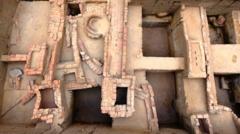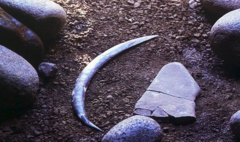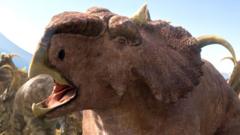Underneath a soccer field in Vienna's Simmering district, archaeologists have made a remarkable discovery: a mass grave containing the remains of at least 129 individuals, dating back to an era marked by conflict between the Roman Empire and Germanic tribes nearly 2,000 years ago. This substantial find, announced this week, occurred during renovations by a construction firm.
Experts from the Vienna Museum reported that the skeletons were linked to a significant military event, likely one that left Roman forces defeated and in haste to abandon the area. Radiocarbon dating identified the bones to the period between A.D. 80 and 234, coinciding with the reigns of numerous Roman emperors such as Domitian and Trajan, who were engaged in military skirmishes in this region.
In addition to skeletal remains, archaeologists uncovered various artifacts, including an iron dagger, lance points, and protective gear like scale armor and a cheek piece from a helmet. Notably, shoe nails from Roman military footwear, known as caligae, were found near one of the skeletons, further affirming the military context of this burial site.
The rarity of such skeletal remains is underscored by the fact that cremation was the prevailing practice for ancient Romans until the third century A.D. “This is a unique opportunity to study the life histories of people from the first century A.D.,” remarked Michaela Binder, the project's lead anthropologist. The findings not only enhance our understanding of Roman military history but provide invaluable insights into the lives of individuals from that tumultuous period in European history.



















